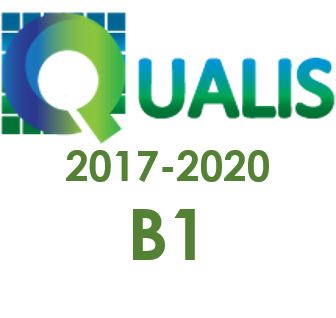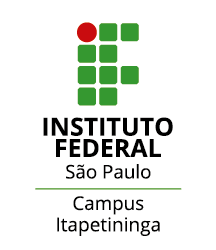Efeitos da capacidade metacognitiva, nível acadêmico e gênero na criatividade científica de estudantes do ensino médio
Palavras-chave:
Creatividad científica. Destrezas metacognitivas. Nivel académico. Género. Educación Secundaria.Resumo
O objetivo deste estudo foi investigar os efeitos da capacidade metacognitiva, nível acadêmico e gênero na criatividade científica de estudantes do ensino médio. Participaram 135 estudantes do ensino médio espanhol, 63 meninos e 72 meninas. Todos eles receberam dois questionários, um sobre habilidades metacognitivas e outro sobre criatividade científica. Das correlações de Pearson entre as variáveis e da análise de regressão realizada, pode-se concluir que a formação acadêmica é a variável que mais contribui para a criatividade científica, embora explique uma porcentagem muito pequena de variância.
Downloads
Referências
ABRAHAM, A. Genderand creativity: an overview of psychological and neuroscientific literature. Brain Imaging and Behavior, v. 10, n. 2, p. 609-618, 2016.
AKTAMIS, H.; ERGIN, Ö. The effect of scientific process skills educationon students' scientific creativity, science attitudes and academic achievements. Asia-Pacific Forumon Science Learning and Teaching, v. 9, n. 1, p. 1-21, 2008.
BLAMIRES, M.; PETERSON, A. Can creativity be assessed? Towards an evidence-informed framework for assessing and planning progress in creativity. Cambridge Journal of Education, v. 44, n. 2, p. 147-162, 2014.
BODEN, M. Creativity & knowledge. In: CRAFT, A.; JEFFERY, B; LEIBLING, M. (Eds.). Creativity in education. London: London Continuum Publishing, 2001, p. 95-102.
M. BOEKAERTS, M.; CASCALLAR, E. How far have we moved toward the integration of theory and practice in self-regulation? Educational Psychology Review, v. 18, n. 3, p. 199–210, 2006.
CHARYTON, C.; SNELBECKER, G. E. General, artisticandscientificcreativityattributes of engineeringand music students. CreativityResearchJournal, v. 19, n. 2-3, p. 213-225, 2007.
DEHAAN, R. L. (2009). Teaching creativity and inventive problem solving in science. CBE—Life Sciences Education, v. 8, n. 3, p. 172-181, 2009.
EPSTEIN, R. S. Cognition, Creativity, and Behavior: Selected Essays. Westport, CT: Praeger, 1996.
EPSTEIN, R. S; SCHMIDT, M.; WARFEL, R. Measuring and training creativity competencies: validation of a new test. Creativity Research. Journal, vol.20, n. 1, p. 7-12, 2008.
FELDMAN, D. H.; BENJAMIN, A. C. Creativity and education: An American retrospective. Cambridge Journal of Education, v. 36, n. 3, p. 319-336, 2006.
GARDNER, H. Creating Minds: An Anatomy of Creativity Seen through the Lives of Freud, Einstein, Picasso, Stravinsky, Eliot, Graham, and Ghandi. New York: Harper Collins, 1993.
HARGROVE, R. A.; NIETFELD, J. L. (2015) The Impact of Metacognitive Instruction on Creative Problem Solving. The Journal of Experimental Education, v. 83, n. 3, p. 291-318, 2015.
HU, W.; ADEY, P. A scientific creativity test for secondary school students. International Journal of Science Education, v. 24, n. 4, p., 389-403, 2002
JAUŠOVEC, N. Metacognition in creative problem solving. In: RUNCO, M. A. (Ed.), Creativity research. Problem finding, problem solving, and creativity. Norwood, NJ: Ablex Publishing, 1994, p.77-95.
JEFFREY, B.; CRAFT, A. Teaching creatively and teaching for creativity: Distinctions and relationships. Educational Studies, v. 30, n. 1, p. 77 –87, 2004.
KIND, P.M.; KIND, V. Creativity in science education: Perspectives and challenges for developing school science. Studies in Science Education, v. 43, n. 1, p. 1–37, 2007.
KOZBELT, A.; BEGHETTO, R. A.; RUNCO, M. A. (2010). Theories of creativity. In: KAUFMAN, J; STERNBERG, R. (Eds.), The Cambridge Handbook of Creativity, 2nd edition. Cambridge: Cambridge University Press, 2010, p. 20-47.
LEE, M. K.; ERDOGAN, I. The effect of science–technology–society teaching on students’ attitudes toward science and certain aspects of creativity. International Journal of Science Education, v. 29, n. 11, p. 1315-1327, 2007.
NEWTON, L. D.; NEWTON, D. P. (2014). Creativity in 21 st-century education. Prospects, v. 44, n. 4, p. 575-589, 2014.
OFFICE FOR STANDARDS IN EDUCATION. Expect the unexpected: Developing creativity in primary and secondary schools. London: HMSO, 2003.
PESUT, D. J. Creative thinking as a self-regulatory metacognitive process: A model for education, training and further research. The Journal of Creative Behavior, v. 24, n. 2, p. 105–110, 1990.
SAHLBERG, P. Rethinking accountability in a knowledge society. Journal of Educational Change, v. 11, n. 1, p. 45-61, 2010.
SCHRAW, G.; CRIPPEN, K. J.; HARTLEY, K. Promoting self-regulation in science education: Metacognition as part of a broader perspective on learning. Research in science education, v. 36, n. 1-2, p. 111-139, 2006.
SHARMA, N. (2015). Scientific creativity in relation to cognitive style and achievement in Science of secondaryschoolstudents. Educational Quest-An International Journal of EducationandApplied Social Sciences, v. 6, n. 1, p. 25-29, 2015.
SHARP, C. Developing Young Children's Creativity: what can we learn from research? Topic, v. 32, p. 5-12, 2004.
SPERLING, R. A.; HOWARD, B. C.; MILLER, L. A.; MURPHY, C. Measures of children's knowled geand regulation of cognition. ContemporaryEducationalPsychology, v. 27, n. 1, p. 51-79, 2002.
TABACH, M.; FRIEDLANDER, A. School mathematics and creativity at the elementary and middle-grade levels: how are they related? ZDM, v. 45, n. 2, p. 227-238, 2013.
VAN DER STEL, M.; VEENMAN, M. V.; DEELEN, K.; HAENEN, J. Thein creasingrole of metacognitive skills in math: A cross-sectional study from a developmental perspective. ZDM, v. 42, n. 2, p. 219-229, 2010.
VEENMAN, M. V.; SPAANS, M. A. Relation between intellectual and metacognitive skills: Ageand task differences. Learningand Individual Differences, v. 15, n. 2, p. 159-176, 2005.
YANG, K. K.; LIN, S. F.; HONG, Z. R.; LIN, H. S. Exploring the assessment of and relationship between elementary students’ scientific creativity and science inquiry. Creativity Research Journal, v. 28, n. 1, p. 16-23, 2016.
Downloads
Publicado
Como Citar
Edição
Seção
Licença
Copyright (c) 2020 Revista Internacional de Pesquisa em Didática das Ciências e Matemática

Este trabalho está licenciado sob uma licença Creative Commons Attribution-NonCommercial-NoDerivatives 4.0 International License.




